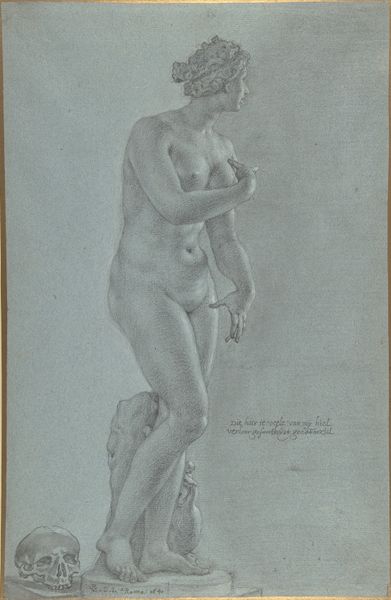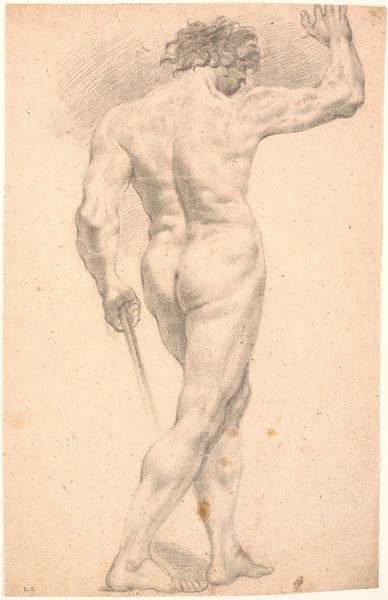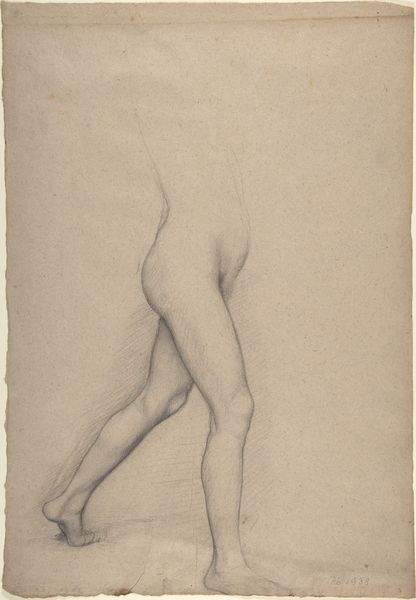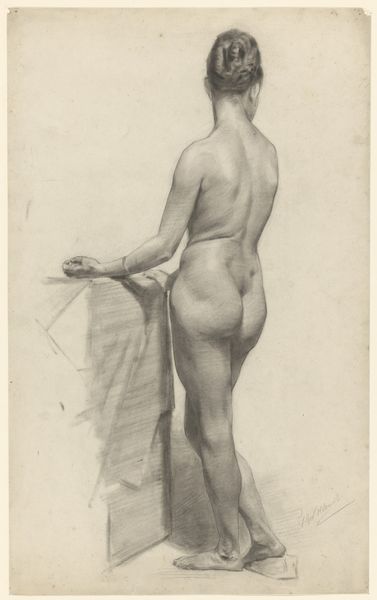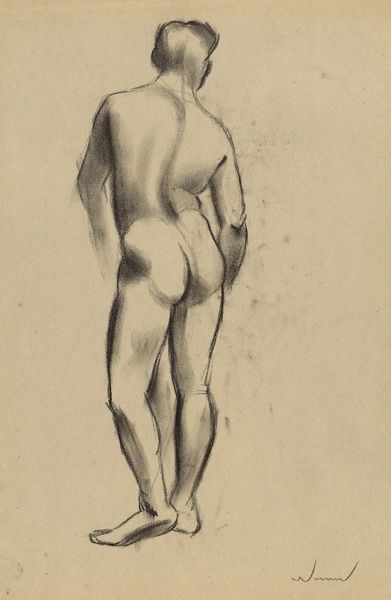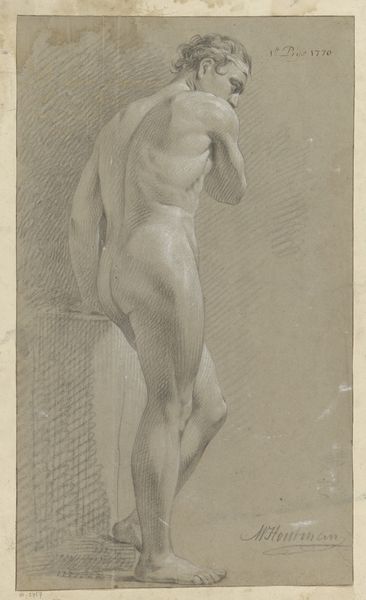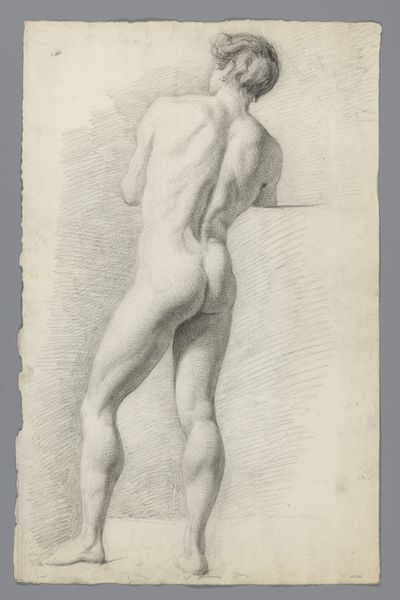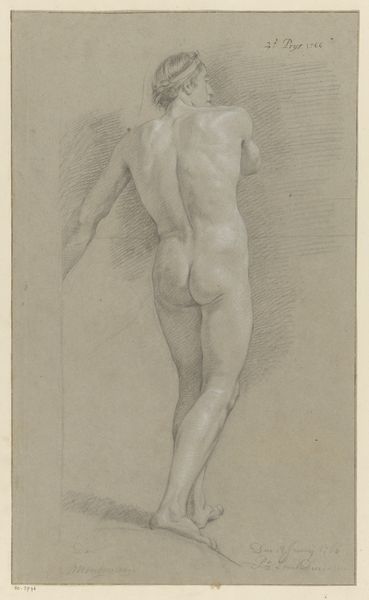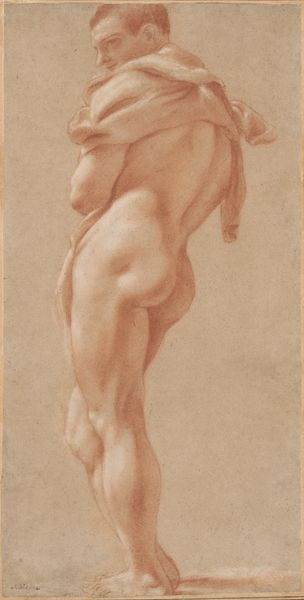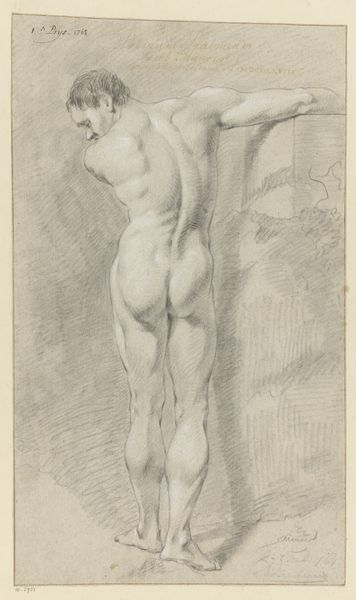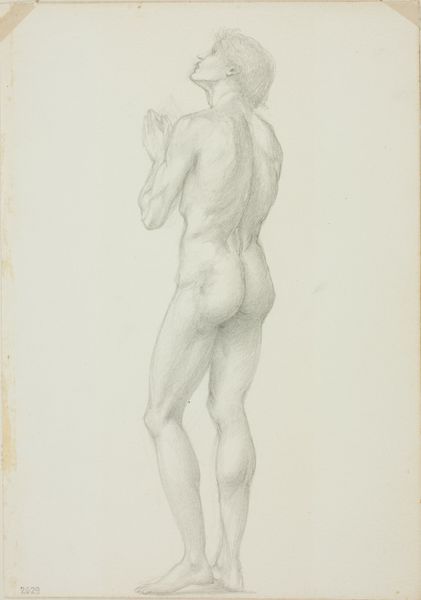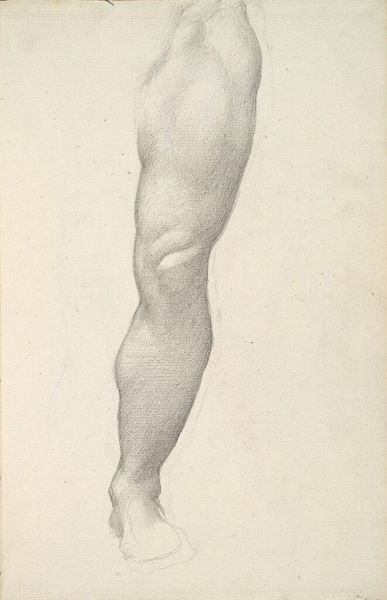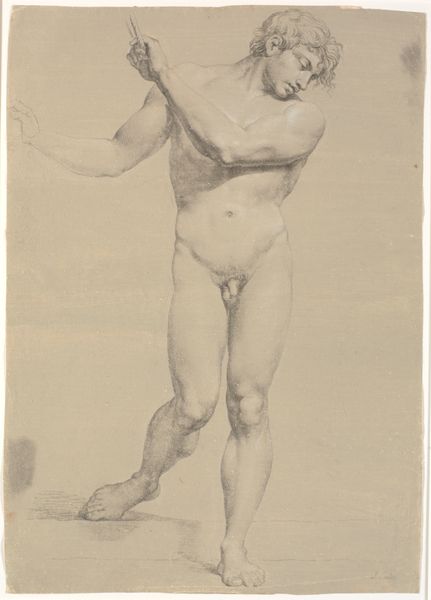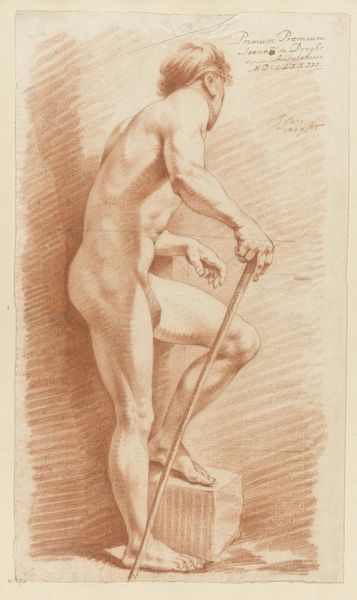
drawing, pencil
#
drawing
#
baroque
#
figuration
#
momento-mori
#
pencil
#
nude
Dimensions: 16 1/2 x 10 13/16in. (41.9 x 27.4cm)
Copyright: Public Domain
Curator: Peter van Lint's pencil drawing, "Venus de' Medici; view from the back," dating to around 1640, captures the Baroque aesthetic so well. The work is now held at the Metropolitan Museum of Art here in New York. Editor: The almost ghostly rendering creates such a stark contrast, an interplay of allure and morbidity that grips your attention instantly. Curator: It's fascinating how van Lint employed a classical subject, then added an overt "memento mori" with that skull tucked near the base. Considering the prevalent role of classical sculpture as a form for teaching students about form and technique in drawing, the means of production itself reveals quite a bit. Editor: Indeed. The skull shifts our focus to mortality. We're placed in an intriguing and even defiant dialogue between beauty and the unavoidable ephemerality of life, touching on societal fixations with idealized feminine beauty standards that are not really attainable or, for that matter, sustainable. It speaks to a whole gendered dynamic of that era, one where art celebrated feminine ideals while also reminding women about their impending death. Curator: And look at how the materials further emphasize these dichotomies: a humble pencil sketch depicting a grand, timeless subject. The accessibility of drawing also breaks down established hierarchies within art production during this period. Were more women, for instance, able to master drawing, even as painting was closed off? Editor: It also begs the question of whose gaze are we inhabiting here? Framing the sculpture from the back, it invites questions of perspective, authority, and the potential for vulnerability in art. And who, specifically, are we inviting into this intimacy? Curator: That's a potent point. The drawing process involved studying a pre-existing object which itself may or may not have been faithful to "reality", so the role of representation— and labor—really gets obscured here. Editor: Exactly. It opens so many pathways into discussions of power, representation, and who gets to shape historical narratives. The material simplicity clashes intentionally with the grandiose themes, making its social and historical context ever more palpable. Curator: Considering the Baroque period and its obsession with ornate details and dramatic effect, it's incredible how this drawing can invite complex interpretations by just featuring basic art materials. Editor: And that juxtaposition helps uncover deeper meanings, doesn't it? It allows for engagement with these powerful sociopolitical critiques through art.
Comments
No comments
Be the first to comment and join the conversation on the ultimate creative platform.
